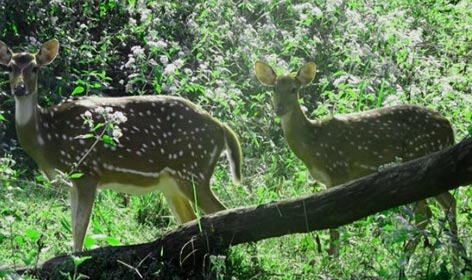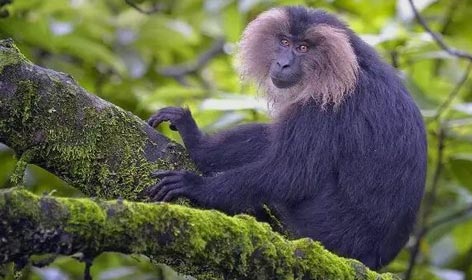Silent Valley National Park
Location - Silent Valley Division, Mannarkkad, Palakkad, Kerala
Best time to visit - October to February
How to reach:-
Train - Olavakkode Railway Station (75 km)
Flight - Peelamamedu Airport, Coimbatore (155 km)
The Silent Valley National Park is the core of the Nilgiri Biosphere Reserve and is perched in the north-eastern corner of the Palakkad district, in the Kundali Hills of the Western Ghats of Kerala. With the extensive variety of flora and fauna along with the status of the evergreen rainforest (the last one in Kerala), the national park is a must visit place in Palakkad, Kerala. The core zone of the Silent Valley National Park has the status of a National Park and the buffer region bag the title of Forest Reserve. The headquarters of both core and buffer areas are located at Mukkali and in Mannarkkad the Divisional office is located. The buffer zone of the Silent Valley National Park is a part of the Nilambur Elephant Reserve, functional under Project Elephant.


The woodlands of the Silent Valley boast the highly productive forests in the world, which harbours exceptional species of fauna in them. The entire park of Silent Valley is in the shape of a rectangular table, enclosed on all sides by elevated uninterrupted ridges. Kunthipuzha, a perennial river flows from north to south direction in the western side of the national park and finally merges with the river Bharathapuzha. The area receives the maximum rainfall in the months of June, July and August. The rainy season of the region gets influenced by both south-western and north-eastern monsoons, the former being more influential to bring rain in the first week of June.
There are several tribal communities settled around the Silent Valley National Park. The tribes include Muduga, Kurumba, Kattu Naiken and Irula. Their primary occupation is agriculture and they are chiefly engaged in shifting cultivation and they grow crops like ragi, mustard, maize, pepper, chama, banana, dal, ginger, and so on. Nature camps are organized every month, especially for the school students to impart nature education and instill awareness regarding conservation-oriented activities, encompassing both indoor and outdoor sessions.
A few tourist attractions to visit near Silent Valley National Park include Palakkad Fort, Parambikulam Wildlife Sanctuary, Malampuzha Dam, Nelliampathy Hill Station, Fantasy Park, Meenvallom Waterfalls, etc. Trekking trails and camping are among the thrilling activities opted for by the tourists visiting Silent Valley National Park.
History - In 1914, the forests of Silent Valley were declared Reserved Forests. Till 1921, Silent Valley was the part of South Malabar Forest Division. It came under the control of the Palakkad Forest Division from 1921 - 1988. In 1984, Silent Valley was recognized as a national park and had its formal inauguration in 1985. In 2007, 148 sq km of the area was added as a buffer zone to Silent Valley and was attached to the preexisting core zone of 89.52 sq km. In 2012, the Silent Valley National Park was declared UNESCO World Heritage Site. The history of the British influence on the national park says that Robert Wight, a British botanist, first discovered the forest of the Western Ghats in 1857 and the area was named Silent Valley because of the missing sound of Cicadas.
Safari - The safari timing of the Silent Valley National Park is from 8 am to 5 pm. No safari vehicles are allowed inside the park beyond the time limit. Visitors are free to choose any slots for the safari within the stipulated time. The national park is a paradise for nature lovers where they can spot various species of birds and animals. For the best experience, an experienced guide is required to provide detailed information about the park. A visit to the watch tower during the safari is a must, from where the tourists can enjoy the spectacular view of the entire national park adorned with lush greenery and wildlife.
Flora - Algae, Orchids, Lichens, Legumes, Grasses, Asters, Ferns, Cardamon, Rubiaceae, Black Pepper, Liverworts, Beans, Rice and medicinal plants.
Fauna - Lion-tailed Macaque, Nilgiri langur, Malabar Giant Squirrel, Peshwa’s bat, Nilgiri Tahr, tiger, panther, leopard, Jungle cat, Common Palm Civet, Hanuman Langur, stripe-necked mongoose, sloth bear, small Travancore flying squirrel, spotted deer, barking deer, mouse deer, sambar, elephant, bush frog, gaur, dhole, Indian pangolin, porcupine, etc.
Kerala Tour Packages:
- Amazing Kerala Budget Tour
- Best Magical Kerala Tour
- Exotic Kerala Tour
- Offbeat Kerala Family Package
- Kerala Hills Backwater Beaches
- Through the Hills and Backwaters
- Beaches and Backwaters of Kerala
- Enchanting Hill Stations Tour
- Relaxing Beach Vacation
- Beach Excursion of Kerala
- Kerala Tamilnadu Tour
- Tamilnadu tour with kerala
- Kerala and tamilnadu package
- Karnataka and Tamil Nadu